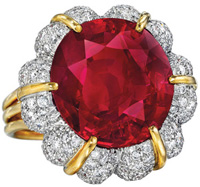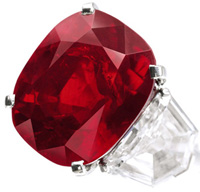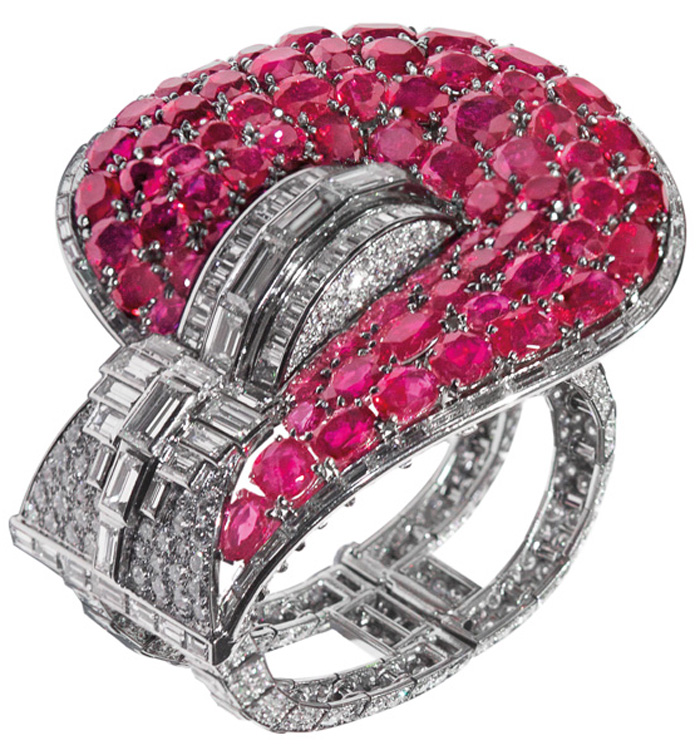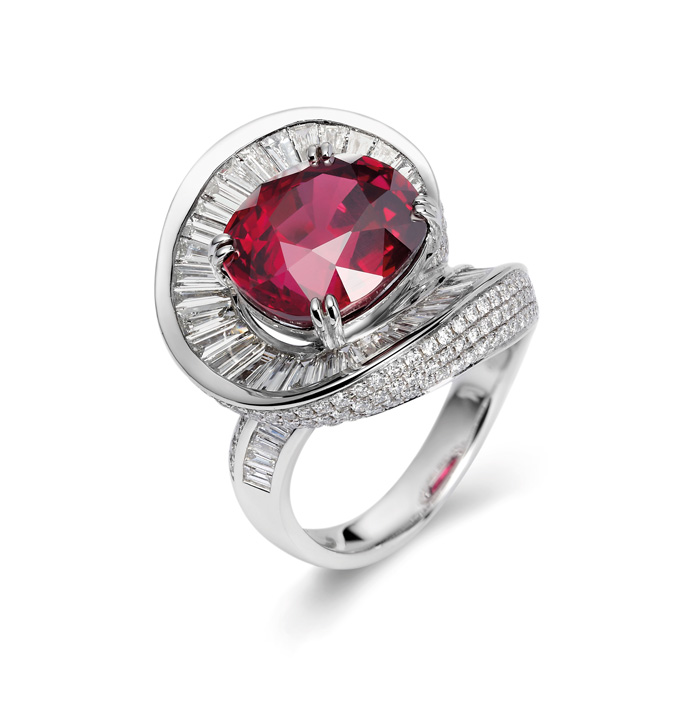
The Sanskrit word for ruby is ratnaraj and it literally translates to “king of gems.” Ruby comes from the Latin word rubeus, which means red. With its rich color, it’s easy to understand why ruby is associated with love and a faithful, passionate commitment. Medieval Europeans who were wealthy enough to afford rubies wore them to attract health, wealth, wisdom and success in love. If you were born in July, you’re in luck because ruby is your birthstone. It is also the gem that commemorates the 15th and 40th wedding anniversaries.
“The color red evokes passion and life and there is no other gemstone that can compete with the red of a ruby. It exudes power and magic that has been encapsulated for millions of years,” says Joanna Hardy, author of the book Ruby: King of Gems. “It is a very rare stone and when you see a ruby being worn, it really reflects the person’s individuality.”

High-quality rubies over 1 or 2 carats are very unusual. When they do come along, they sell for what could be considered a king’s ransom. The Jubilee Ruby, a 15.99-carat Burmese ruby ring by Verdura, sold at Christie’s New York in April 2016 for $14,165,000. A year earlier, in May 2015, the 25.59-carat Sunrise Ruby set in a ring by Cartier sold at Sotheby’s Geneva for $30,335,698.

Rubies are a very hard stone. The ruby rates number nine on the Mohs Scale, which measures a gemstone’s hardness with a rating of one to ten, with ten being the hardest. Ruby is part of the corundum family of minerals and it gets its red color from the element chromium. Any other gems in the corundum clan that are not red are sapphires.
As with most gemstones, inclusions will reduce the value. However, inclusion-free rubies are extremely rare. Needlelike traces of the mineral rutile create inclusions in rubies. When the rutile forms in intersecting groups, it is referred to as silk. This silk will sometimes enhance the look of a ruby. It scatters the light, creating a softer color, and spreads the color more evenly to the crown.
“Colored gemstones often have inclusions — natural impurities — within the stone. These are part of their DNA. Basically, along with good color, the clearer the stone, the more expensive it will be. Don’t worry about the inclusions. These are what make your ruby unique; you will never get two stones that look the same. However, be sure that the inclusions do not reach the ruby’s surface, as this can weaken the stone,” explains Hardy, who is an independent fine jewelry specialist. “Nearly all rubies are heat treated today, which is perfectly acceptable, but disclosure about all treatments is key. If you are purchasing a significant ruby, then it must be accompanied by a recognized gemological laboratory report.”

There are many sources of ruby throughout the world, including Vietnam, Kenya, Tanzania, Afghanistan, Tajikistan, Madagascar and Malawi. But the most important sources for ruby are Burma (Myanmar), Mozambique and Cambodia. Burmese rubies are the best known and have been the standard to which all other rubies are held. One of the most important factors in the look of a ruby is the fluorescence-to-iron ratio. In rubies, fluorescence is desirable; it is what gives them their glow. The less iron, the more fluorescence the ruby will have. Where a ruby grows will affect the amount of iron in the stone.
Burma rubies are found in the Mogok region of the country. The rubies are hosted in marble and they are highly fluorescent, with a low iron content.
By contrast, rubies from Cambodia have weak fluorescence and a high iron content and they are found in basalt.
In Mozambique, rubies grow in amphibole – a group of common rock-forming silicate minerals. These rubies have a higher iron content than rubies found in marble, but lower than those found in basalt.

“The color is very important and it needs to speak to you. You are looking for an evenness of color with good saturation. Tilt the stone in all directions, as sometimes the color can look vacant along some angles,” Hardy advises. When you are in a store buying a ruby Hardy suggests that If possible, you should view the stone in daylight so you don’t get a surprise when you take the stone away from the shop’s light source. “Rubies sometimes have a strong chromium content, which means that when you view the ruby in a yellow/incandescent light, it will really look like it’s glowing. The cut of the stone is also important, as this will also make the ruby come alive.”

